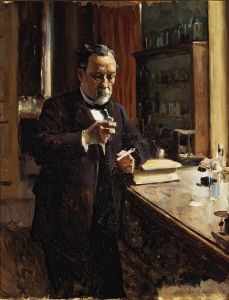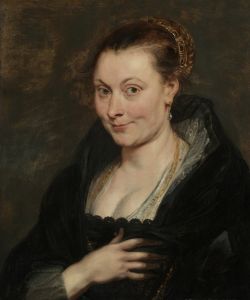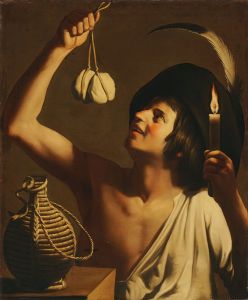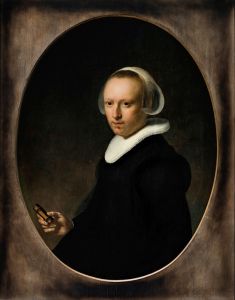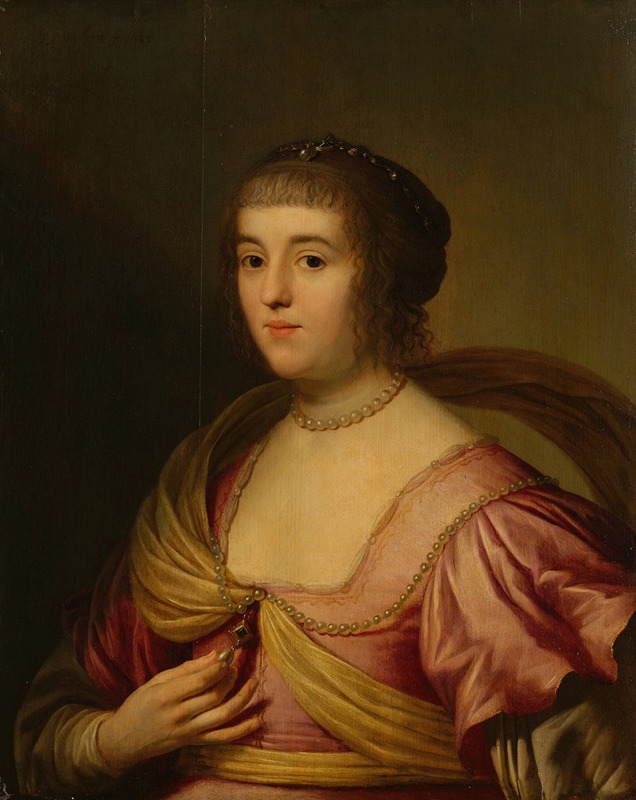
Portrait of Amalia van Solms
A hand-painted replica of Gerard van Honthorst’s masterpiece Portrait of Amalia van Solms, meticulously crafted by professional artists to capture the true essence of the original. Each piece is created with museum-quality canvas and rare mineral pigments, carefully painted by experienced artists with delicate brushstrokes and rich, layered colors to perfectly recreate the texture of the original artwork. Unlike machine-printed reproductions, this hand-painted version brings the painting to life, infused with the artist’s emotions and skill in every stroke. Whether for personal collection or home decoration, it instantly elevates the artistic atmosphere of any space.
The Portrait of Amalia van Solms is a painting by the Dutch Golden Age artist Gerard van Honthorst, created in the 17th century. Amalia van Solms (1602–1675) was a prominent figure in Dutch history, serving as the wife of Frederick Henry, Prince of Orange, and playing an influential role in the political and cultural life of the Dutch Republic. This portrait is one of several depictions of Amalia by various artists, reflecting her status and importance during her lifetime.
Gerard van Honthorst (1592–1656) was a renowned painter from Utrecht, known for his mastery of portraiture and his use of dramatic lighting, influenced by the Italian Baroque style and the works of Caravaggio. By the time he painted Amalia van Solms, Honthorst had established himself as a leading portraitist for the Dutch elite and European nobility. His works often emphasized the dignity and refinement of his sitters, qualities that are evident in this portrait.
The painting portrays Amalia van Solms in a formal and elegant manner, befitting her high social rank. She is depicted wearing luxurious clothing, adorned with fine details and jewelry, which highlight her wealth and status. The composition and style of the portrait reflect the conventions of aristocratic portraiture in the 17th century, emphasizing both the individuality of the sitter and her role as a representative of her family and social class.
This work is notable for its attention to detail and the artist's ability to capture the personality and poise of the sitter. Honthorst's skillful use of light and shadow enhances the three-dimensionality of the figure and adds a sense of depth to the painting. The background is typically subdued, drawing attention to Amalia herself and reinforcing her prominence as the central focus of the artwork.
The Portrait of Amalia van Solms is an example of how art was used during the Dutch Golden Age to convey power, prestige, and identity. It also reflects the close relationship between art and politics in the period, as portraits of influential figures like Amalia were often commissioned to reinforce their public image and legacy.
The painting is housed in a collection, though its exact current location may vary depending on exhibitions or loans. It remains an important piece for understanding both the artistic achievements of Gerard van Honthorst and the historical significance of Amalia van Solms in the context of 17th-century Europe.





